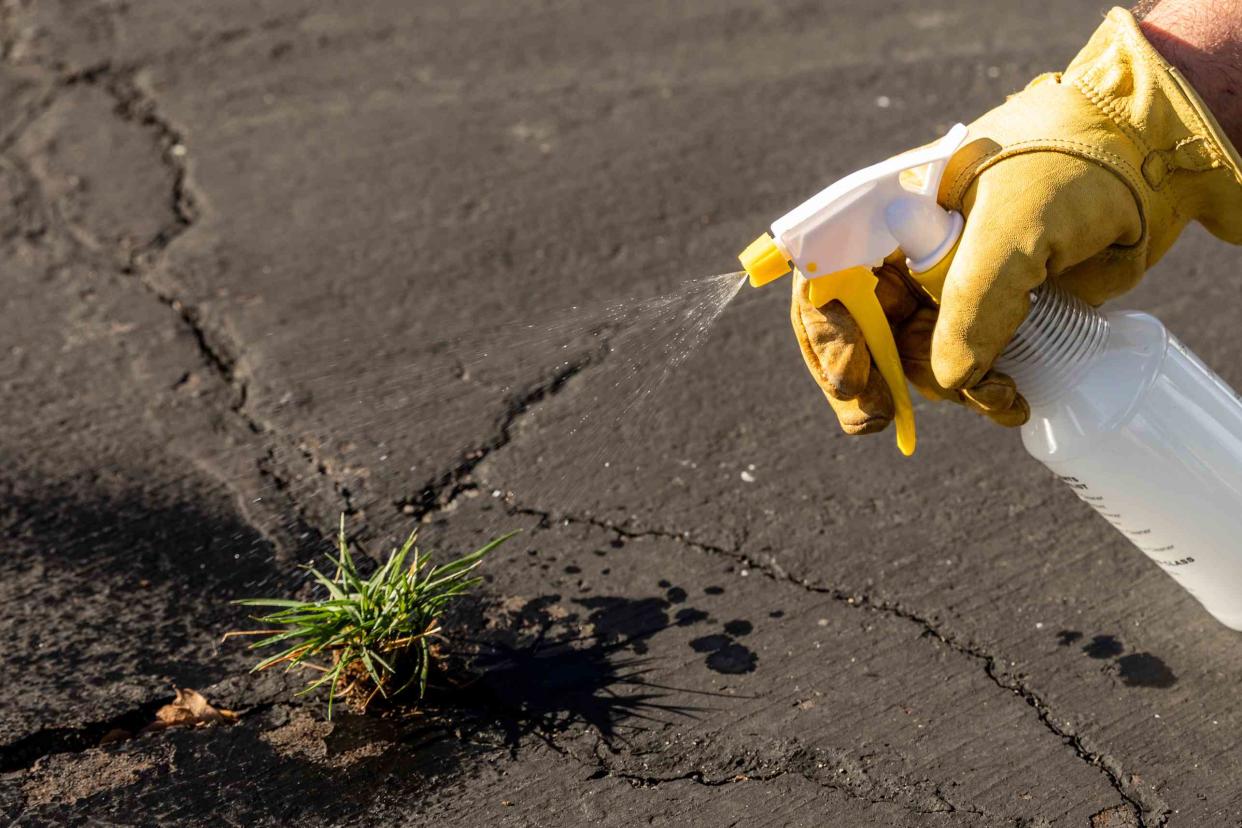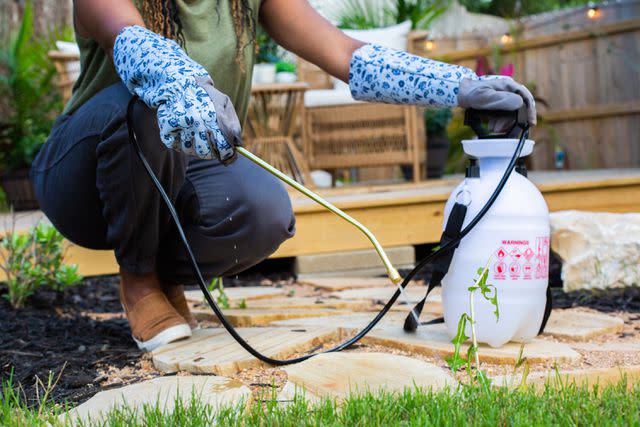Does Bleach Really Kill Weeds? How to Make a DIY Weed Killer That Actually Works

The Spruce / Jayme Burrows
Bleach does more than whiten clothes—its potency also kills pesky weeds. It is the perfect homemade solution for getting rid of isolated weeds, like those growing in between pavers or on a patio.
Learn why bleach is effective at killing weeds, how to mix up a solution for spraying, and what precautions to take to do the job safely.
Use Bleach on Isolated Weeds
Note that bleach is a non-selective herbicide—it will kill any plant, including the ones you want to keep. Don't use it to control weeds in a vegetable garden, flower bed, or lawn.
Why Bleach Works to Kill Weeds
Bleach is an effective weed killer against most types of small weeds. It works at the root level, where the sodium content of the bleach interferes with a weed's ability to absorb minerals.
When applied undiluted, bleach often even prevents weeds from coming back for a long time because it raises the soil pH to a level unsuitable for many plants.
Want more gardening tips? Sign up for our free gardening newsletter for our best-growing tips, troubleshooting hacks, and more!
How to Make a Homemade Weed Killer With Bleach

The Spruce / Liz Moskowitz
Use the right kind of bleach: Be sure you're using chlorine bleach—this type of bleach is best for killing weeds.
Mix with water: Bleach is strong enough that you can dilute it to kill weeds. Stretch your bleach supply by mixing it with water: 1 part bleach to 5 parts water does the trick. Diluting bleach also means that it will cause less harm to your soil and that, should you accidentally get some on a "good" plant, the plant has a better chance of surviving.
Transfer solution to spray bottle: Using a funnel to avoid spills, pour some of the solution into a spray bottle.
Be Careful Handling Bleach
Wear safety gloves, long sleeves, long pants, and goggles when handling bleach, and do not haphazardly mix bleach with other substances.
How to Use Bleach on Weeds
Weed control is part of sound patio landscaping, and this includes killing weeds that grow up between pavers that have been set in sand (without mortar). This is just the sort of area where bleach can be used as a weed killer.
With your spray bottle, spray the area where the weeds are coming up. Don't be too quick to pull the weeds out afterward—wait a few days to make sure they're dead.
Besides targeting weeds between patio pavers, other suitable uses for a bleach herbicide include killing weeds in sidewalk cracks, along the edge of the driveway, or between flagstones in a sand-set stone path.
Pros and Cons to Using Bleach to Kill Weeds
Pros
Bleach is potent enough that it should kill small weeds on the first try.
Bleach is inexpensive enough that reapplication (if necessary) is feasible.
Cons
Bleach can stain paving stones.
Bleach kills bacteria, and this includes good bacteria in the soil.
It's non-selective and alters the soil pH, because bleach is alkaline.
Be Cautious When Using Bleach Near Other Plants
Proper caution begins by picking a suitable day to spray. It should not be windy, nor should rain be in the forecast. Both wind and rain have the potential to carry the bleach where you don't want it (onto your good plants).
Make sure none of your good plants are located in the immediate area where you will be spraying. This is easy enough if they are growing in a container.
It's harder if they are growing in the ground. In this case, cover them with plastic to protect them. If bleach should get on them accidentally, wash it off with a garden hose immediately.
Read the original article on The Spruce.

